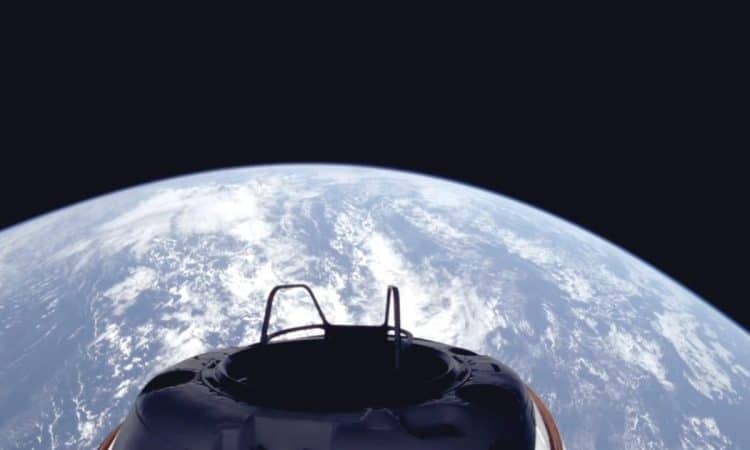
On Wednesday the SpaceX Hairstyle with the Polaris-Crew reached its highest point. The 4 astronauts were around 1.400 Kilometer above Earth – the greatest distance humans have traveled to Earth since the last Apollo missions to the Moon in the early 1970s. The ISS is located at an altitude of around 400 kilometers.
The next highlight of the Polaris mission is on Thursday morning: it will be the first private Spacewalk take place. The plan is for the crew from 10:55 a.m. CEST at a height of 700 Kilometer will attempt to exit the spaceship. There will be one for that Livestream give.
➤ Read more:
This is how the exit will work
In contrast to missions on the ISS, hobby astronauts Jared Isaacman and Sarah Gillis are supposed to be on their missions 20 minute excursion but not floating freely in space. They will all the time Foot straps be attached to some kind of ladder.
Therefore they didn’t need a separate one Bagpack with breathing air, but would come over one Hose supplied from the Dragon capsule. Another difference from the ISS: The SpaceX spacecraft does not have an exit lock.
➤ Read more:
Risky experiment
Astronauts on the ISS space station usually get several weeks Time before an outdoor operation so that the body can get used to the conditions and that Risk of errors sinks.
Already on the Polaris exit on the 3rd day of the flight says German astronaut Reinhold Ewald, such an early external mission can actually only be justified if everyone involved felt good, including those who stayed in the spaceship.
To prepare, the Polaris crew went through a so-called Pre-Breathe Process. Nitrogen is slowly removed from the blood so that the gas does not form bubbles in the tissue and bloodstream when the pressure changes.
➤ Read more:
The dangers of leaving
This means that the two astronauts who remain in the capsule also have to wear their spacesuits because they are… Vacuum are exposed to space and there is no longer any breathable air in the cabin. So the SpaceX spacecraft has to do something more oxygen and nitrogen with you, which is then pumped back into the capsule.
The lack of the lock also means that Space radiation could flow through the open hatch and potentially damage electronics. Another difference between the Polaris exit and those at the ISS is the higher risk for Micrometeorites.
“At an altitude of 700 to 800 kilometers most space junk on the move, more than at an altitude of around 400 kilometers on the ISS,” explains Ulrich Walter, former astronaut and professor of space technology at the Technical University of Munich.
➤ Read more:
Little comfort
“The danger of an impact is there, but the probability of this remains very, very low.” It offers protection 8 by 4 meter capsule If in doubt, little – and in addition to little space, also no comfort.
People sleep in the Sitdie Toilette is only separated by a curtain. The 4 private astronauts were thoroughly cleaned up like the astronauts of the space agencies claustrophobia been tested, says Walter. And no matter how strenuous the trip is: “Ultimately, it’s similar to four of us sitting in a camper van for five days.”
➤ Read more:
Advances in space travel
The space expert sees the really special thing about “Polaris Dawn” as being that none of the four people on board are conventional trained astronaut is. “Isaacman has flown before, but like Kidd Poteet, he’s actually just a jet pilot.” The two women had no relevant training at all.
“For me this is a sign of Advances in space travel“The technology is so easy to use that you don’t need conventionally trained astronauts,” emphasizes Walter. “There were also specially trained elevator operators – until the technology was so advanced that anyone could operate an elevator.”
Goal: more space tourism
The space expert therefore sees the purpose of the mission less in the experiments nothing great to expect be. “It’s about space tourism,” he says. “It’s about showing people that even people who aren’t experienced astronauts can fly wonderfully.”
Astronaut Ewald assumes that the field mission will not provide any key insights. “NASA is not being encouraged to lower its safety standards, nor are we being encouraged by the courageous self-experiment find out more about radiation damage during space flights or the reliability of the new suits,” says the 67-year-old.

